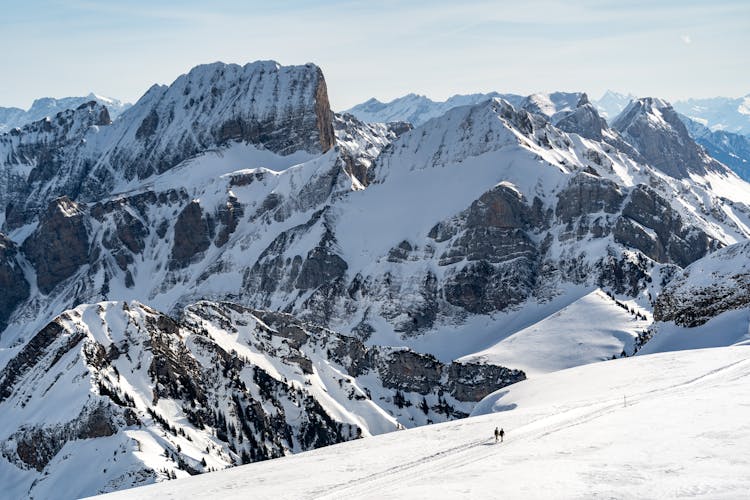All Categories
Featured
Keys to Safe Hiking on Mountain Trails
TLDR Summary- 🗺️ Plan Your Hike: Always inform someone about your itinerary.
- 🏋️ Know Your Limits: Match your physical condition to the trail difficulty.
- ☔ Prepare for Weather: Check forecasts and be ready for sudden changes.
- 🎒 Pack the Essentials: Carry the 10 Essentials to ensure preparedness.
- 🔦 Emergency Preparedness: Keep a backup plan and communication tools handy.
When embarking on an adventure through mountain trails, safety should always be your top priority. Preparing your hike is crucial. Prior to departure, it is vital to notify someone about your itinerary, including the trail you will take, expected return time, and any potential hazards you might encounter. Having someone aware of your whereabouts can make a significant difference, especially in case of emergencies. For more insights, check out Happy Trails: Pro Tips for Hiking Safety, where you can find additional valuable tips for safe hiking.
Another critical aspect is recognizing your physical limits. Assess your fitness level and choose a trail that corresponds to your capabilities. Physical fitness varies from person to person, and knowing what you can handle is essential to enjoying your hike without overexerting yourself. Consider the weight you’re carrying, whether it’s a heavy backpack or supplies, and account for any medical issues that may influence your journey.
Weather conditions can dramatically affect your hiking experience. It is vital to check the weather forecast before setting off. Never underestimate the unpredictability of mountain weather; what starts as a sunny day can quickly turn into a rainstorm or snow. If thunderstorms are predicted, it’s best to avoid high and open areas to ensure your safety. Always prepare for temperature changes, and consult with park rangers for guidance.
Among the most effective ways to guarantee a safe hiking experience is to pack wisely. Ensure that you carry the 10 Essentials needed in the wild: a first aid kit, navigation tools (like maps and compasses), sun protection (sunscreen, hats, sunglasses), insulation (extra layers), illumination (flashlights or headlamps), fire starters, repair kits, adequate nutrition (snacks), hydration (water bottles), and an emergency shelter. The right supplies can make all the difference between a smooth outing and a disastrous one.
In addition to packing appropriately, it is important to protect your body. Utilizing sunscreen with a minimum SPF of 30 is highly recommended, particularly at higher altitudes where UV exposure is increased. Wear sunglasses and a hat to shield your eyes and face from the sun’s harmful rays. Hydration is key; drink plenty of water and avoid beverages that can dehydrate you, such as coffee and alcohol. Take periodic breaks in shaded spots to cool down, and keep an eye out for signs of heat illness in yourself and others.
While hiking, strictly adhere to designated trails. Straying from well-marked paths not only endangers your safety, but it can also lead to damage to the environment. Be cautious around rapid water currents and don't take risks on slippery surfaces. Cliffs can present significant hazards, so exercise extreme caution when near them. Additionally, be mindful of potential encounters with wildlife; carry bug repellents and check yourself for ticks and mosquitoes regularly.
Emergency preparedness is a non-negotiable aspect of hiking. In advance of hitting the trail, leave a detailed plan with a friend or family member who isn't on the hike. Carry a cell phone; however, remember that in remote areas, cell service may be limited. Familiarize yourself with using a compass, as it can aid in navigation when technology fails. In case of an emergency, prepare to contact authorities—be ready to provide them with vital information.
For those keen on exploring trails with added guidance, consider investing in hiking maps. For any outdoor enthusiast, a reliable hiking map such as the Great Smoky Mountains National Park Map can be a lifesaver, showing you the best routes and potential hazards.
To wrap up, hiking is one of life's incredible joys, offering breathtaking views and lasting memories. However, prioritizing safety ensures that these experiences remain enjoyable rather than traumatic. Staying vigilant can help create a rewarding hiking adventure, no matter the trail you choose to explore. Remember that safety starts with you—be the responsible hiker who is prepared for both the beautiful and unpredictable aspects of the great outdoors. Explore confidently, but do so with respect, knowledge, and safety at the forefront of your mind.
After your hike, it's helpful to reflect on the experience. Share your insights with fellow hikers, learn from them, and continue to research best practices for trail safety. As avid outdoor lovers, our community grows stronger when we exchange stories and safety tips. Wrap up your adventures by considering which local trails you want to explore next, continuously building your hiking prowess around safe practices."
For more inspiration regarding outstanding trails, take a look at details on hiking at Mt Charleston Peak and discover new routes that you may not have previously considered.
Key Takeaways
- 🗺️ Plan your hike thoroughly to enhance safety.
- 🏋️ Understand your limits to enjoy a more fulfilling adventure.
- ☔ Stay updated on weather conditions and respond accordingly.
- 🎒 Always carry essential gear for any situation.
- 🔦 Prepare for emergencies in all scenarios.

Latest Posts
How to Preserve Your Bread's Freshness
Harnessing Digital Detox for Mental Calmness
Daly City CA's Finest Roofing Experts: A Comprehensive List